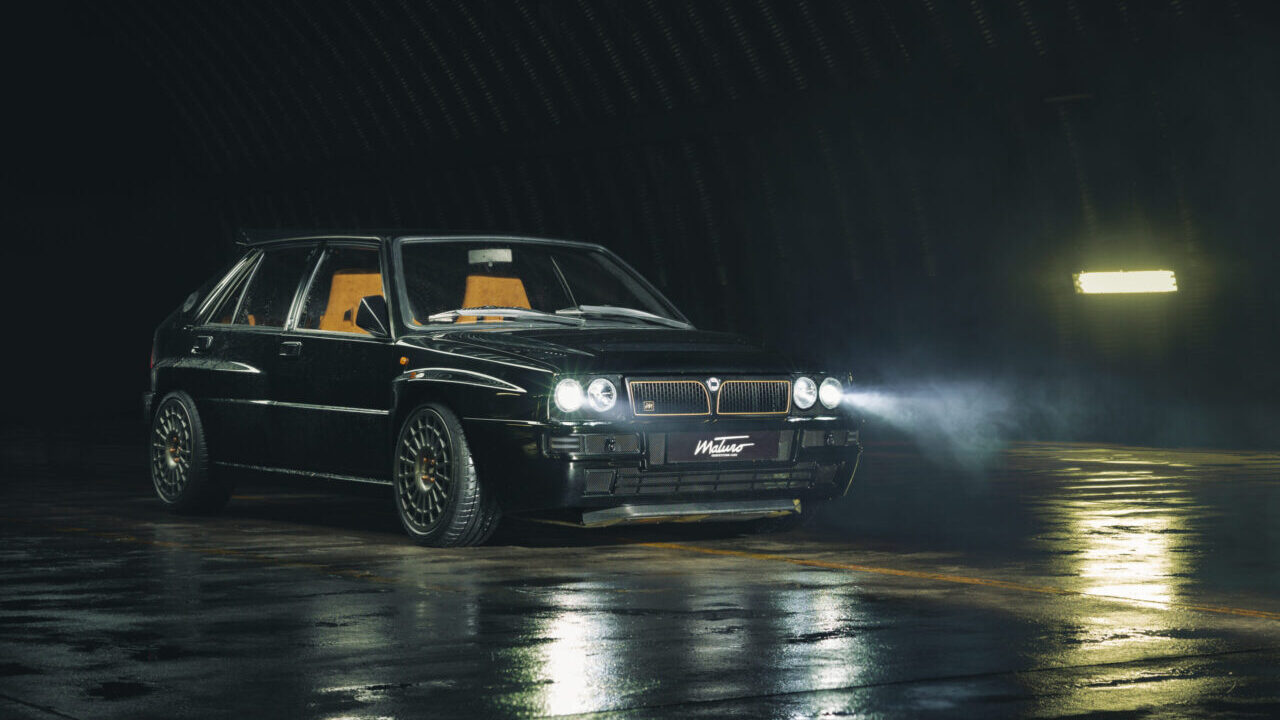
I’ve always had a thing for homologation specials, and the Lancia Delta HF Integrale is right up there among my all-time favorites. For a while, it was even possible to buy one without selling vital organs. However, I’ve sworn that I’ll never buy one.
On two different occasions, I’ve tried to get my hands on one of these beauties, but both cars burned to the ground before I could hand over my hard-earned cash. I don’t know if it’s a curse or just old Italian electric components.
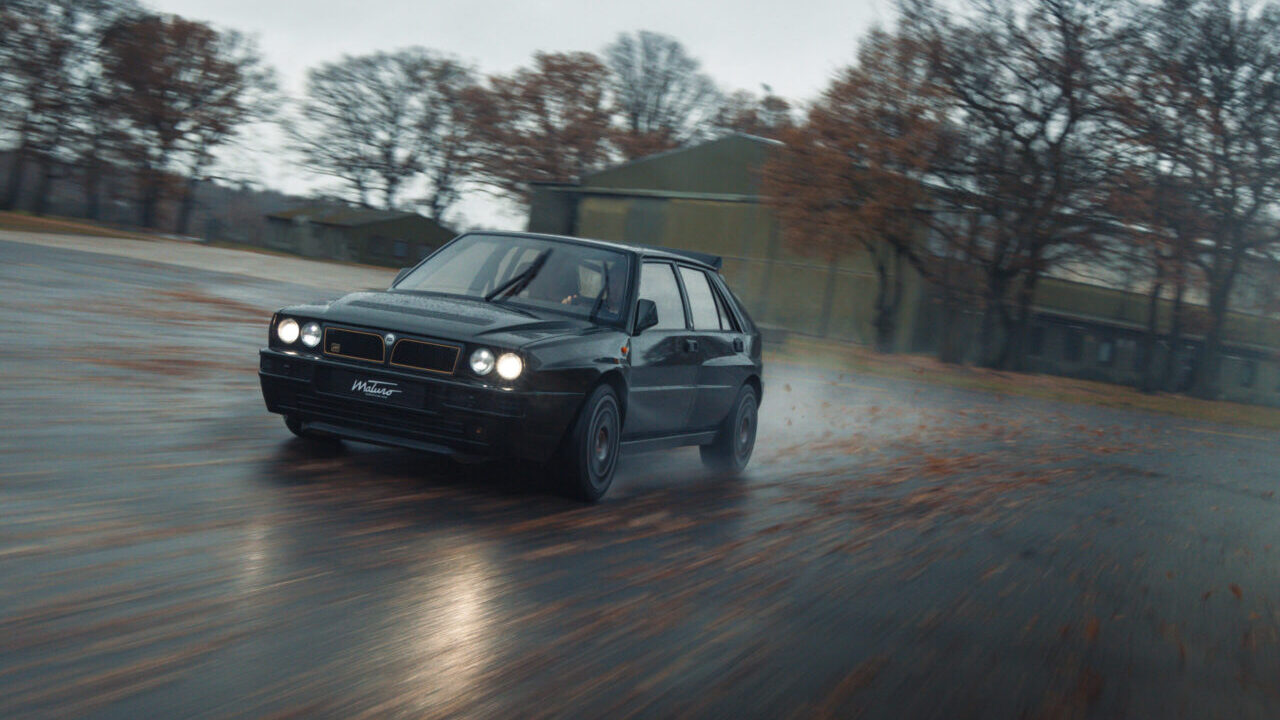
Either way, I won’t risk it and have accepted that I’ll never own a Lancia. At least no one can accuse me of not making sacrifices to preserve these classics.
That said, assuming it’s not a curse causing the fires, Maturo Cars offers the perfect solution in the form of the Maturo Stradale. To the untrained eye, it may look like a lightly modified Delta Integrale, but in reality, it’s a very different beast. This is a proper Group A rally car built for the road, using modern-day componentry.
Creating a Monster

When the Group B rally series was shut down in the mid-’80s, Lancia turned to its Delta HF 4WD, realizing it was the perfect vehicle for Group A rallying. Over the following years, they kept refining it, resulting in the Lancia Delta HF Integrale 8v, 16v, and Evo versions.
That formula clearly worked, as Lancia won six consecutive WRC Manufacturer’s Championships from 1987 to 1992. Considering how good the original was makes the Maturo Stradale even more impressive.
The Dutch company tears the Lancia Delta HF Integrale down to a molecular level, eliminating all its flaws and imperfections, and accentuating the strengths.
Once the chassis has been completely stripped and vapor-blasted, Maturo repairs any damaged sections, cover it in an epoxy primer, and then repaint it inside and out. Thanks to the addition of a custom-built roll cage along with welds at over 250 weak spots, the chassis gains significant structural rigidity.
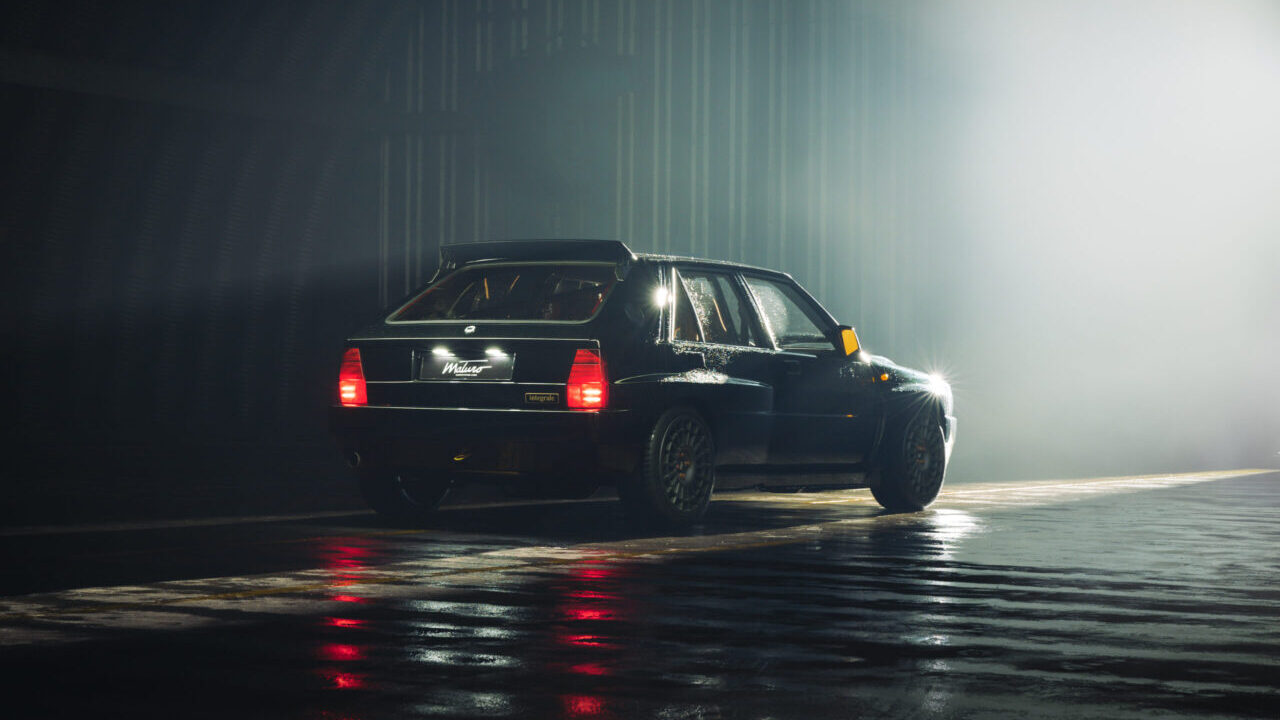
Maturo didn’t stop there, though. Far from it. They dress it up in sexy carbon fiber, which not only reduces weight by 50 kg / 110 lbs, but also eliminates the Delta HF Integrale’s corrosion issues and uneven panel gaps. Since the carbon fiber panels are bonded in place using an aircraft-standard adhesive, it also adds to the car’s stiffness.
There are plenty of subtle differences between the original Delta HF Integrale and the Maturo Stradale, but most people would never be able to spot them unless the two are parked next to each other.
However, even Stevie Wonder can tell that the fit and finish of the Stradale’s body panels are in a completely different league than the original sheet metal, and when the light hits it from just the right angle, you can catch a glimpse of the carbon weave under the paint. Poor Stevie won’t notice that, though.
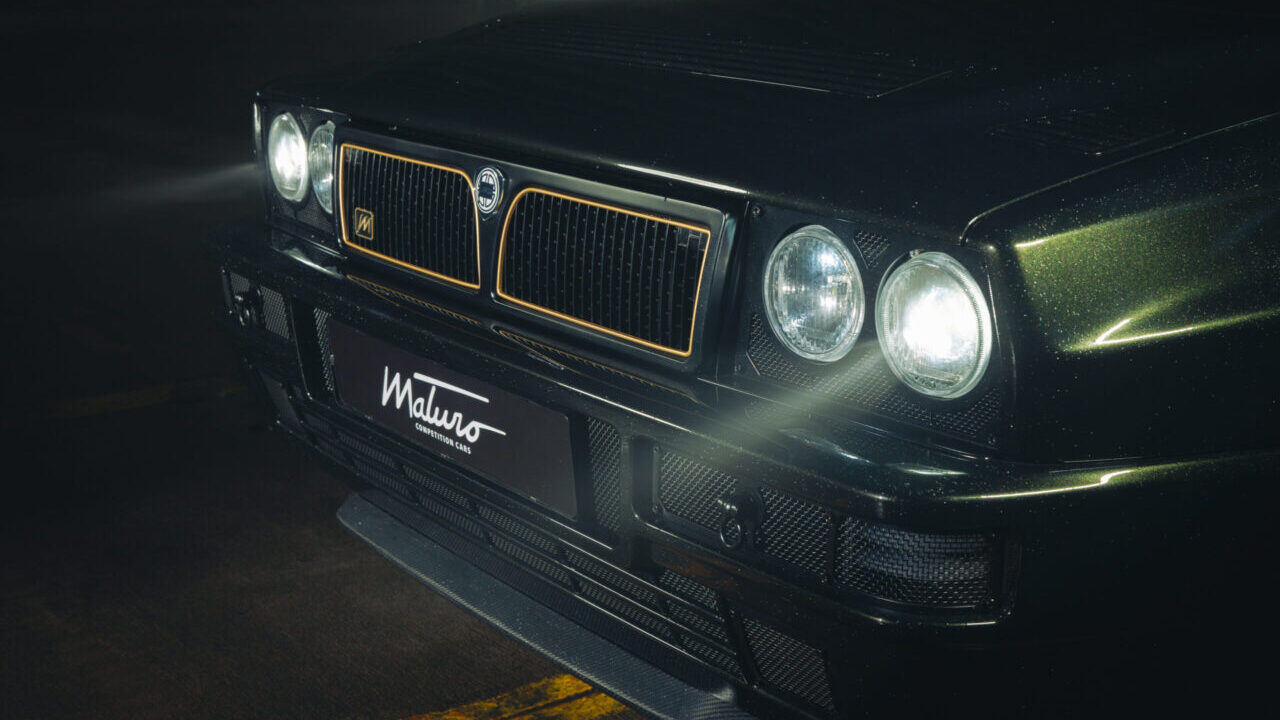
Pop the lightweight hood, and you’ll notice an engine that looks brand new, and that’s because it kind of is. Like the rest of the car, the engine has been completely stripped down and Maturo then rebuilds it to Group A spec, but with the addition of modern components.
It’s given a revised intake with a carbon fiber airbox, and there’s a bigger intercooler hiding behind the front grille. Surprisingly, Maruto say they rebuild the original Garret turbocharger rather than fitting a new one.
The original turbo housing does receive internal upgrades, though, such as roll bearings instead of plain bearings. With better airflow, the Garret now spools up quicker and runs 1.8 bar boost, unlike the 1.2 bar of the original.
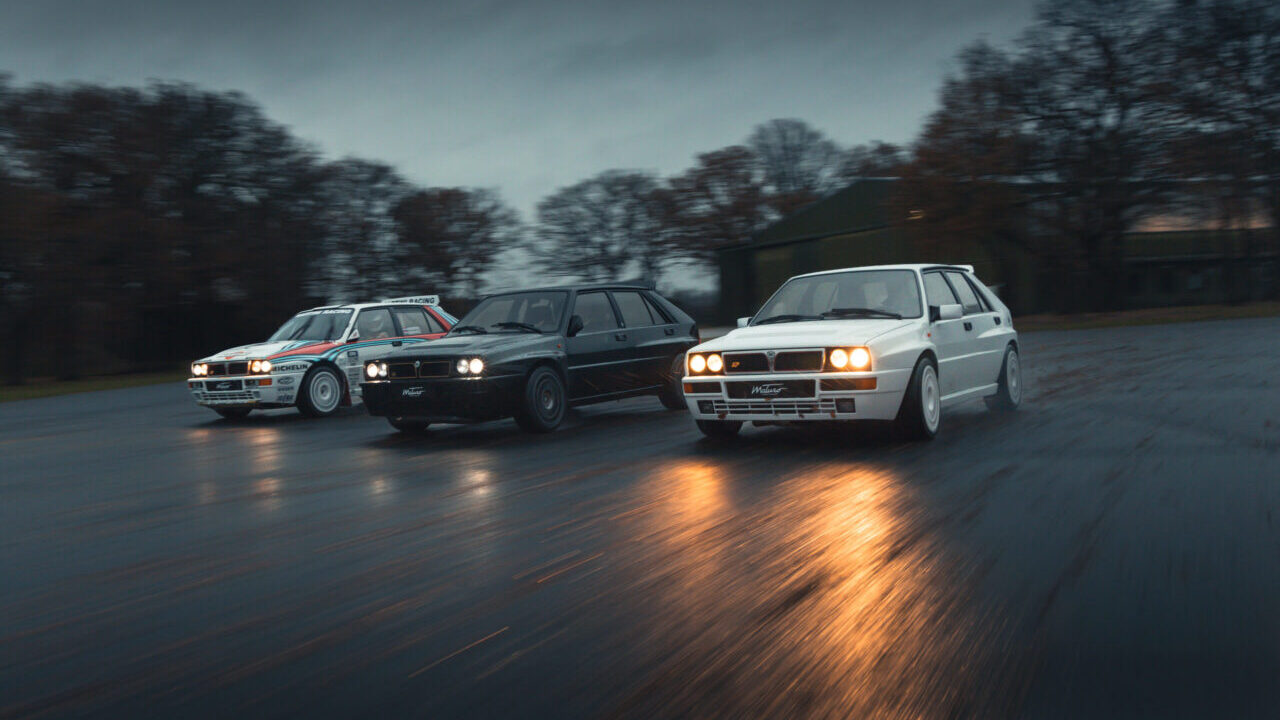
Maruto also upgrades the engine internals, with new and improved valves, valve springs and valve spring cups. The cylinder head gets improved flow, the cams are replaced with high-performance units, there are forged stainless steel connecting rods and Wiseco pistons, improved, wider timing belt, and a new injection system — all kept in check by a motorsport ECU.
With these modifications, the engine is now pumping out 400 Italian thoroughbreds and 540 Nm / 398 lb-ft of torque, meaning the road-going Stradale actually has more power than the original Group A Delta HF Integrale rally car.
All those horses are sent to each corner via a revised 5-speed manual gearbox with reinforced housing and internals or an optional dog-leg box with straight-cut gears, letting the driver slam it through the gears without using the clutch.
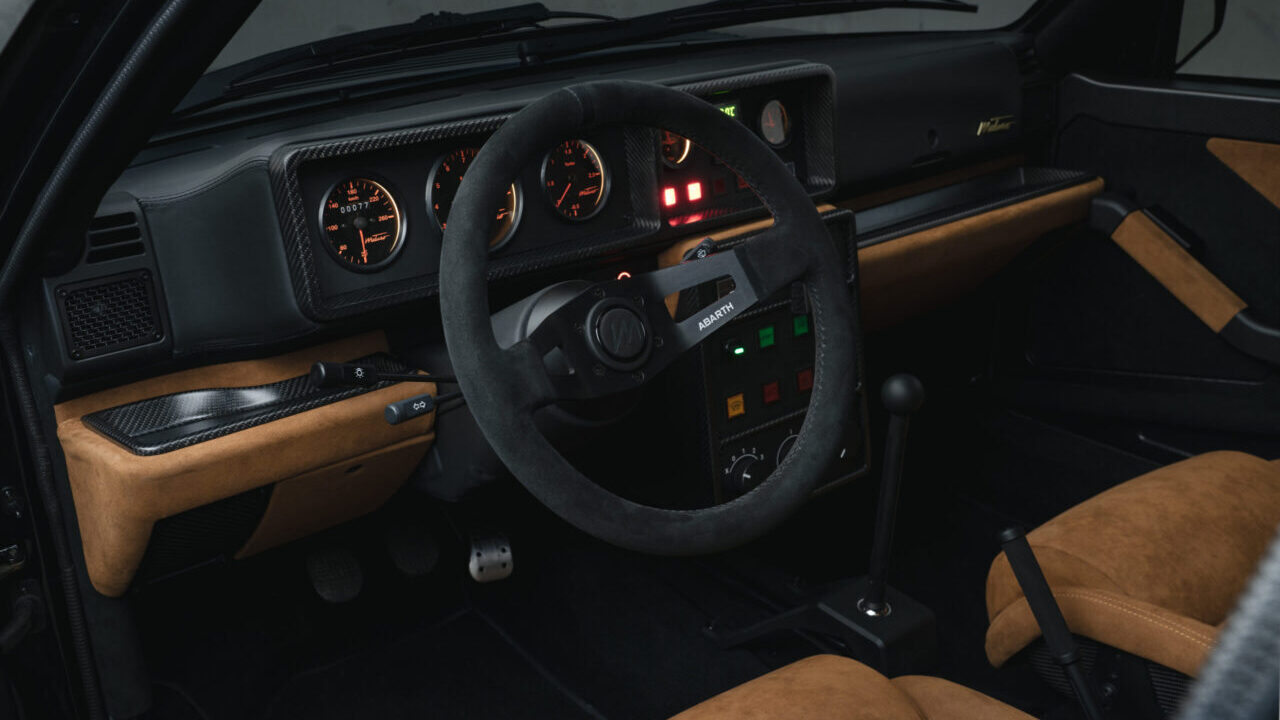
Be warned that the latter comes with quite a lot of added noise as well, sounding every bit like the rally car. Awesome? Yes! But perhaps not ideal if you plan on having a conversation with your passengers?!
Of course, even with AWD, this kind of power would be wasted without control, which is why the Maturo Stradale uses front and rear plated limited slip differentials to distribute the power more effectively and improve its cornering ability.
The Stradale also gets the same brakes as the Maturo Rally Group A Abarth spec. We’re talking cross-drilled 330 mm discs on the front and 282 mm at the rear, with calipers made from 7075 billet aluminum.
These are pedal box operated, which is perfect for spirited driving, and the driver can adjust the brakes using a rotary knob found on the redesigned handbrake. Speaking of the handbrake, it’s of the hydraulic kind and uses a separate cylinder.
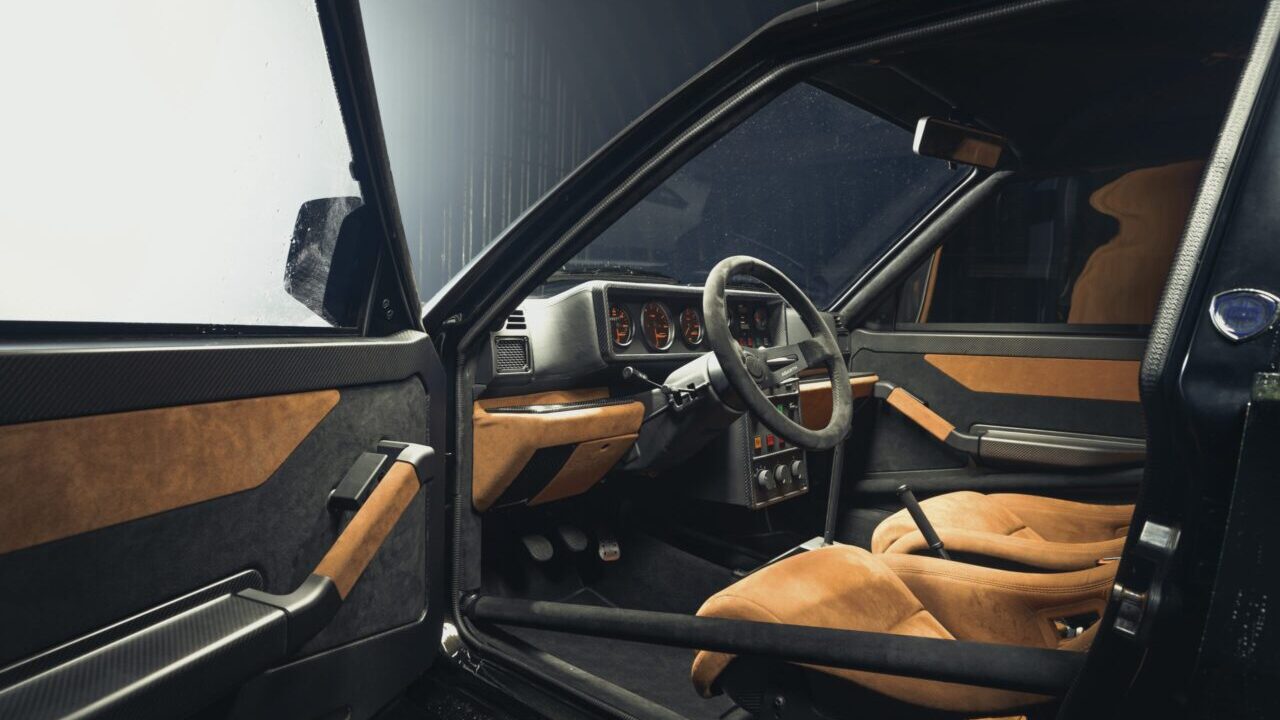
Suspension-wise, the Maturo Stradale sees a significant upgrade from the original Lancia Delta HF Integrale on which it’s based. Here, we find state-of-the-art, 4-way adjustable motorsport shock absorbers derived from the company’s Rally-specced cars, along with ARC Technology to reduce body roll. Buyers can also opt for a setup with electronically controlled ride height.
Moving to Maturo Stradale’s interior, it’s all-new, hand-made, and completely bespoke, but still offers a familiar design.
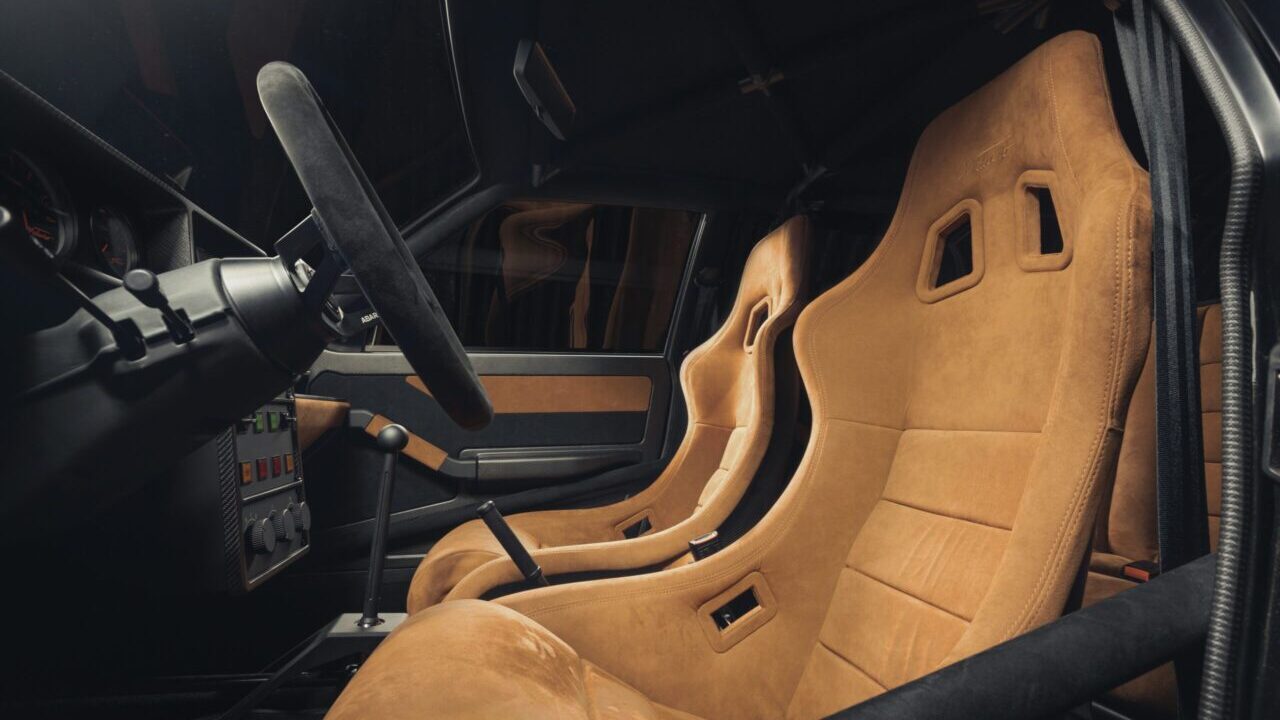
Its sophisticated design is a mix of the Group A Abarth rally car, Lancia Delta HF Integrale, and the Delta S4 Stradale. At the front, we find a pair of carbon fiber bucket seats, and the most hardcore buyers can opt to have the rear seat removed and get 4- or 6 point harnesses instead.
With or without a rear seat, the Stradale’s cabin is a nice place to be. Everything is finished in carbon fiber, anodized aluminum, titanium, and leather/alcantara. The gauges look like they’re straight out of the early ‘90s, there’s a Classic Abarth steering wheel, and the shifter and handbrake are made from a solid chunk of aluminum.
Make Some Noise!
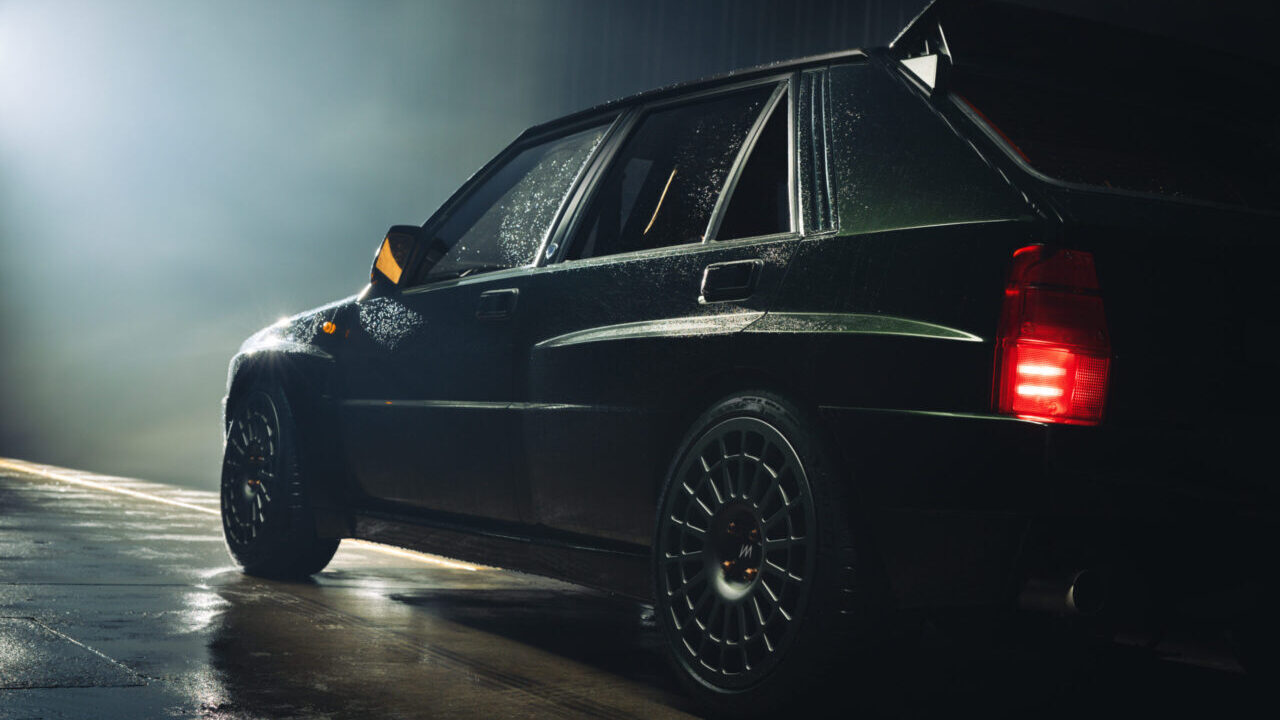
As mentioned, Maturo Cars is based in the Netherlands, a country that’s known for tulips and windmills, not tight and twisty mountain roads. However, the company did its homework, and the road-going Maturo Stradale will move as swiftly through the countryside as its legendary championship-winning counterpart.
That might sound like hyperbole, but Henry Catchpole proved it in his YouTube series for Hagerty, ‘The Driver’s Seat,’ where they had a professional rally driver run through a short rally stage behind the wheel of each car, with just a couple of seconds separating them.
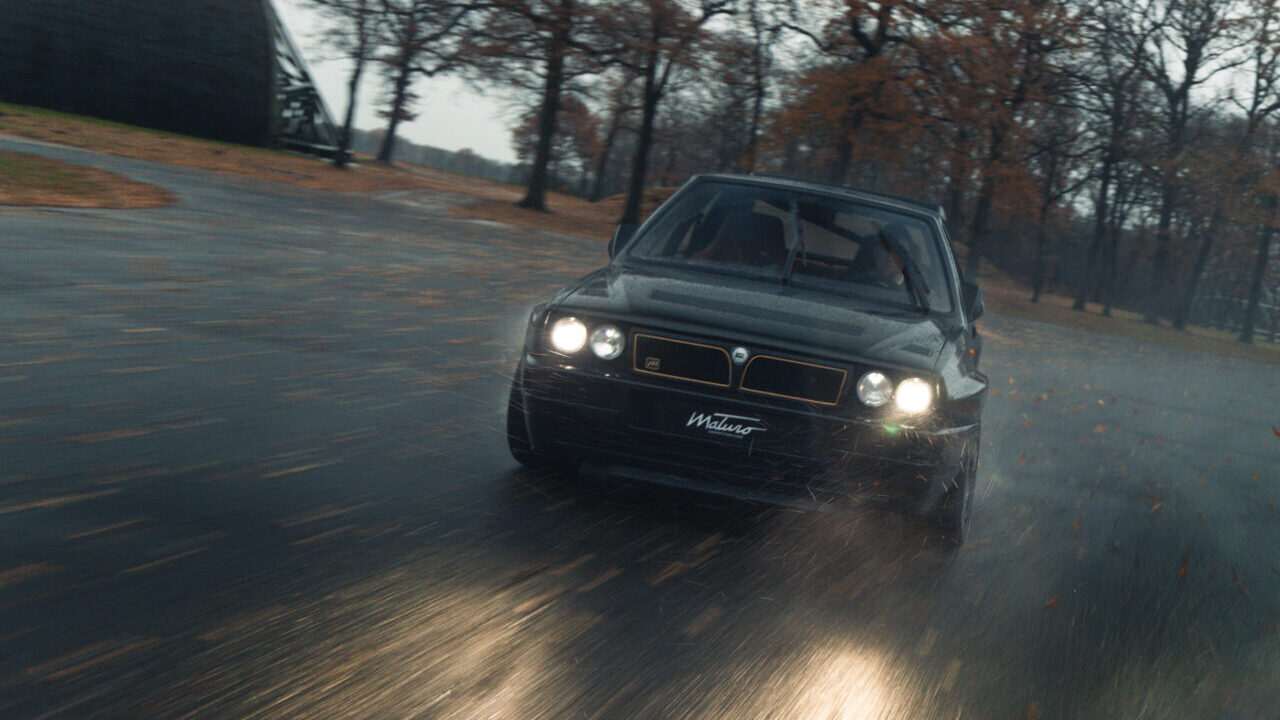
Honestly, this may just be the perfect car. It’s not just looks and performance, to complete the trifecta, it even sounds amazing. The exhaust emits a wonderful, raspy burble, and in true rally car fashion, there’s a satisfying “ptssssht” coming from under the hood every time the driver lifts off the throttle. When fitted with the dog-box, there’s also the solid clunks and mechanical whine, combining for an aural experience that’s off the chart.
I’ll go as far as saying it may just be better than the sum of its parts, which speaks volumes, seeing as all the parts are bespoke and made of pure unobtainium. Still, to fans of rally homologation specials, the Maturo Stradale is as good as they get. Now, I’m off to see a witch doctor about lifting a curse.





